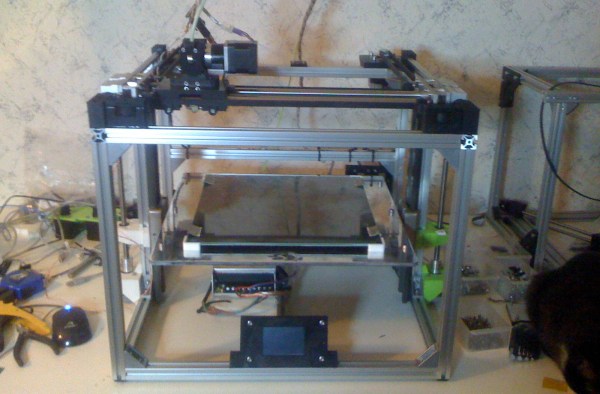Light Graffiti is can be lots of fun if you have a decent amount of artistic ability, and a keen sense of timing. If you don’t have the necessary skills, you can always compensate by using Python-controlled servos to move everything automatically. The Python code can be found here, and makes use of the Python Image Library to process the images into a “drawable” form. A [pyMCU] with firmware capable of simultaneous servo control was used to move the laser fixture around.
One of the more difficult aspects of this experiment was getting the timing correct between each laser pulse. The timing routine involes a bit of geometry, calculating the distance between each using trig. As explained in the article, this may be a bit of overkill. It still didn’t compare to the trig involved in a previous experiment drawing a circle with this laser-servo fixture. Be sure to check out the video of this laser-setup in action after the break. I’ve been quite pleased with the results, and look forward to what can be done with it in the future!
Thanks to [pyMCU] for letting me have a few of these boards to play with!














